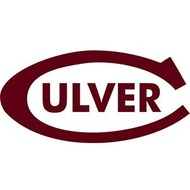How Hot Is Hot? Heat versus Temperature
(View Complete Item Description)The aim of this lesson is to introduce the concepts of heat and temperature, which many students find confusing. During the lesson, students will be asked to explore and discuss situations where even though the same amount of heat is absorbed by several substances, the increase in temperature of the substances is different. This video lesson presents a series of stories relating to heat and temperature, beginning with a visit to a factory where gamat oil is produced. In the video, a man dips his finger into boiling gamat oil yet feels no pain. The scene will draw students’ attention and raise their curiosity about how this is possible. Students will also carry out several experiments to compare and relate the situations where the same amount of heat absorbed by substances will result in different temperatures. By the end of this lesson, students will understand the term “specific heat capacity” and will recognize the difference between a high or low specific heat capacity. They will also understand the term “thermal diffusivity” and how this relates to the topic of the lesson. This lesson offers some authentic learning experiences where students will have the opportunity to relate the concept of heat and temperature to everyday situations. It will take about 50 minutes to complete - however, you may want to divide the lesson into two classes if the activities require more time.
Material Type: Lecture




















